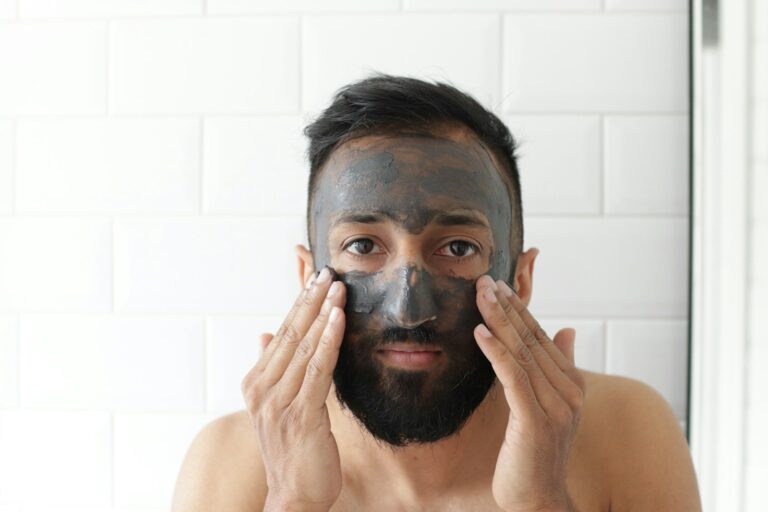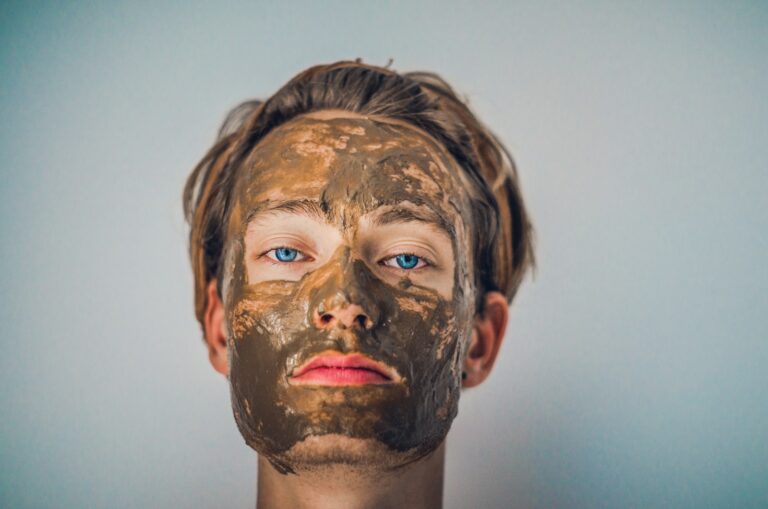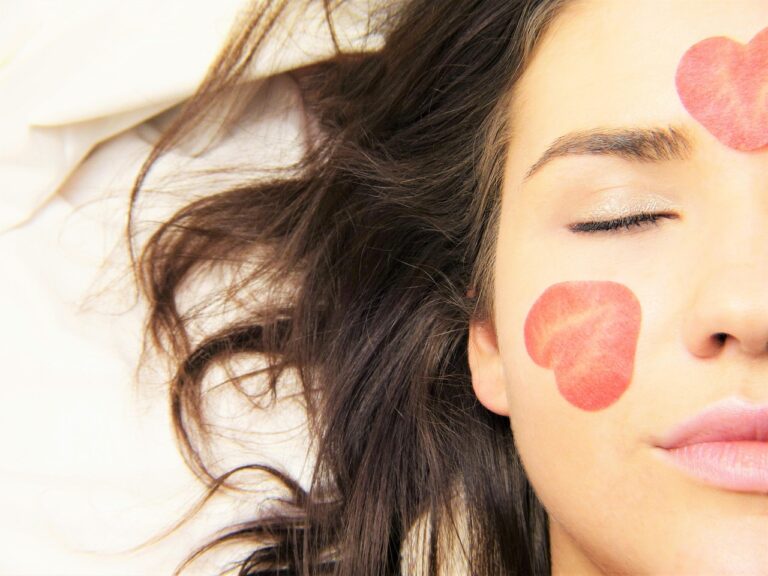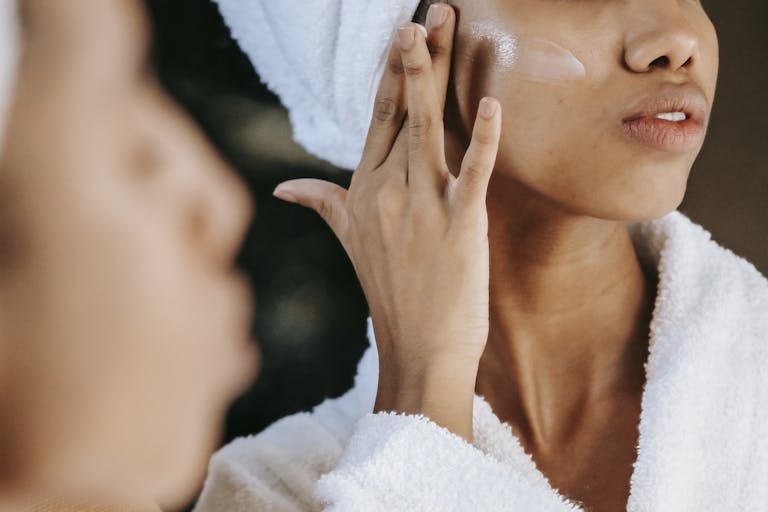It’s important to understand the difference between hydrating and moisturizing your skin to achieve a healthy complexion. While both are vital for maintaining skin health, hydration focuses on increasing water content in your skin, while moisturizing aims to lock in moisture and prevent water loss. Knowing how to properly treat your skin can lead to improved texture and appearance, so let’s explore how each process works and determine the best practices tailored to your unique needs.
The Science Behind Hydration and Moisture
Defining Hydration: The Role of Water in Skin Health
Your skin is, in essence, a living organ that requires a delicate balance of water to function optimally. Hydration directly impacts the skin’s elasticity, firmness, and overall appearance. When you drink adequate amounts of water, it helps to keep your skin cells plump, which can reduce the visibility of fine lines and wrinkles. A well-hydrated epidermis allows for faster cell turnover and better recovery from environmental damage, making your skin more resilient to everyday stressors.
Moreover, studies show that dehydrated skin can accelerate the aging process and lead to a variety of concerns, such as dryness, flakiness, and irritation. Your skin’s natural moisture barrier relies heavily on adequate water intake. Conditions like eczema and psoriasis can worsen with insufficient hydration, highlighting the fundamental connection between your water intake and skin health.
Understanding Moisture: Oils and Occlusives in Skincare
Moisturizing goes beyond the mere presence of water; it involves forming a protective layer on your skin. This layer is typically made up of oils and occlusives, which work to prevent water loss and keep your skin hydrated for longer. Products containing occlusive agents, such as petrolatum, beeswax, and silicones, create a barrier that locks moisture in, thus ensuring your skin doesn’t dry out throughout the day.
On the other hand, oils, like jojoba and squalane, offer additional benefits of nourishing and repairing the skin barrier. These oils not only prevent moisture evaporation but also provide vital fatty acids that can improve the skin’s overall texture and appearance. With the right combination of occlusives and oils, you can effectively seal in hydration and support your skin’s natural defenses.
The unique role oils and occlusives play in moisturizing can make all the difference in your skincare routine. If you find that your skin feels tight or parched after cleansing, incorporating these products can offer immediate relief. By selecting the right blend for your skin type, you’re not just adding a layer of moisture; you’re also enhancing your skin’s ability to protect itself against environmental aggressors. Exploring different combinations can lead to discovering a routine that keeps your skin barrier intact and functioning smoothly.
The Distinct Features: Hydration vs. Moisturization
Key Differences: Ingredients and Their Functions
Hydration and moisturization rely on different ingredients to serve their respective purposes. Hydrating products typically contain ingredients like hyaluronic acid, glycerin, or aloe vera. These substances are known for their ability to attract water from the environment or deeper layers of the skin, allowing your skin cells to expand and become plump. On the other hand, moisturizing products often use occlusive agents such as petrolatum, mineral oil, or shea butter. These ingredients work to form a barrier over your skin, reducing water loss and sealing in moisture, which is especially beneficial for individuals prone to dry skin.
The effectiveness of these ingredients varies depending on your skin type and condition. For instance, if you have oily skin, you might find that hydrating serums give you the refreshment you need without adding extra oil. Conversely, if your skin feels tight and flaky, you may benefit more from a rich moisturizer that provides a dense layer of hydration and support. Finding the right combination tailored to your skin’s unique needs is necessary for achieving healthy-looking skin.
The Skin Barrier: How They Interact Differently
The skin barrier, composed of lipid layers that protect your skin from external aggressors and prevent transepidermal water loss, plays a vital role in how hydration and moisturization function. Hydrating products penetrate the upper layers of skin to deliver moisture, effectively reinforcing the barrier from within. In contrast, moisturizers focus on fortifying the barrier itself, creating a shield that blocks environmental factors and retains your skin’s water content. This ensures that any hydrating benefits you achieve remain effective longer, ultimately leading to improved skin health.
Understanding how both hydration and moisturization interact with your skin barrier is key to maintaining optimal skin health. By ensuring your skin is both hydrated and moisturized, you not only improve its appearance but also enhance its resilience against irritants and dryness. For example, if your skin barrier is compromised—possibly from excessive sun exposure or harsh skincare products—utilizing both types of products can help restore balance and integrity, leading to a more luminous and even complexion.
Identifying Your Skin’s Needs
Signs of Dehydration: Recognizing a Lack of Hydration
Dehydrated skin often exhibits a range of telltale signs that signal its need for hydration. You might notice tightness or itchiness, particularly after cleansing, indicating that your skin moisture levels are low. Fine lines may become more visible, especially around the eyes and mouth, as your complexion struggles to retain moisture. In some instances, dehydrated skin can also produce excess oil as a reaction, leaving you with a paradox of both dry and oily areas.
Another notable sign of dehydration is a dull complexion. When your skin lacks water, it tends to lose its natural glow and may appear lifeless or ashy. This is often accompanied by rough patches, which can further complicate your skincare routine since it may interfere with makeup application and other skin treatments. Taking note of these symptoms is the first step in providing your skin with the hydration it craves.
Signs of Dryness: Spotting Moisture Deficiency
Dry skin presents its own unique set of indicators, distinct from those of dehydration. You may experience persistent flakiness or peeling skin, especially in harsher weather conditions. Unlike dehydration, which can fluctuate daily, dry skin is often a chronic condition characterized by a lack of natural oils. If you notice your skin is prone to redness or feels rough in texture, it likely needs a good dose of moisture.
Dry skin might also be accompanied by tendencies toward sensitivity or irritation. If you’ve ever applied a product that caused stinging or discomfort, it’s possible that your skin deficiency is due to a lack of sufficient moisture rather than hydration. This distinction is vital, as treating dry skin with hydration alone may not yield the desired results. Building a deep understanding of these signs can help you tailor a skincare routine that thoroughly addresses both hydration and moisture deficiencies.
Paying attention to the nuances between dryness and dehydration will guide you in selecting the appropriate products. For instance, individuals with persistent dry skin may benefit more from occlusive moisturizers that seal in moisture, while those facing dehydration might require lightweight serums rich in hyaluronic acid or glycerin, which effectively draws water into the skin. Assessing your skin’s specific needs allows you to create a targeted approach to achieve a healthy and radiant complexion.
The Importance of Skin Types in Hydrating vs. Moisturizing
Understanding your unique skin type is a game changer when it comes to choosing the appropriate products for hydration and moisturization. Each skin type has different needs, and what works for one may not necessarily work for another. Tailoring your approach based on whether your skin is oily, dry, or a combination allows for optimal results and can significantly improve your skin’s overall health and appearance.
| Skin Type | Hydration vs. Moisturization Needs |
|---|---|
| Oily Skin | Focus on lightweight, hydrating ingredients such as hyaluronic acid. |
| Dry Skin | Opt for heavy creams with occlusive agents to lock in moisture. |
| Combination Skin | Use different products for different areas, balancing hydration and moisture. |
| Normal Skin | Maintain with a balanced routine of hydrating and moisturizing. |
| Sensitive Skin | Choose gentle, hydrating products to avoid irritation. |
When addressing oily skin, you may find that you need to emphasize hydration more than moisture. Lightweight products containing hyaluronic acid can help draw water into the skin without adding excess oil. On the other hand, applying a heavy moisturizer can lead to clogged pores and breakouts. In contrast, if you have dry skin, look for products rich in emollients and occlusives. These ingredients help seal in moisture and fight against flakiness, transforming your skin from parched to supple. Tailoring your skincare routine based on these distinctions is vital for maximizing the benefits of your products.
Combination Skin: Balancing Hydration and Moisture
Navigating the waters of combination skin can be tricky, as different parts of your face call for different products. The T-zone, often oily, may benefit from hydrating serums rich in water-based ingredients, while drier areas such as your cheeks and temples may require heavier creams to ensure moisture retention. Striving for that harmony can result in a vibrant, well-balanced complexion.
Being mindful of your skin’s particular needs ensures that you don’t overload any one area with products that might exacerbate oiliness or dryness. Start with a lightweight hydrating serum across your entire face and layer a rich moisturizer only on the drier patches. Products like gel creams can also work wonders as they often provide hydration without being overly heavy.
After pinpointing your skin type and understanding how hydration and moisture interact, you can make informed choices that support its overall health and appearance. Being attuned to your skin’s needs will lead to a more tailored and effective skincare routine.
The Lifecycle of Your Skincare Routine: When to Hydrate and Moisturize
Morning Regimen: Strategies for A Fresh Start
The morning is your time to awaken your skin and prepare it for the day ahead. Start with a gentle cleanser to remove any nighttime impurities, followed by a hydrating serum that boosts moisture levels right from the start. Look for ingredients like hyaluronic acid, which can hold up to 1000 times its weight in water, making it a powerhouse for hydration. As you apply your hydrating serum, you’re setting a solid foundation for your skin to retain moisture throughout the day.
After your hydrating serum, follow up with a quality moisturizer tailored to your skin type. If you have oily skin, lightweight gel moisturizers work well, whereas cream formulations are suitable for dry skin types seeking more intensive nourishment. Always finish with a broad-spectrum sunscreen to protect your skin from UV damage, as hydration and moisture retention can be compromised by sun exposure.
Nighttime Rituals: Repairing and Restoring
As your day winds down, your skin enters its healing mode, making night the ideal time to focus on moisture replenishment and repair. Start by cleansing thoroughly to remove makeup, dirt, and oil. Follow with a hydrating essence or serum packed with nutrients that support skin repair while you sleep. Ingredients like ceramides and peptides work to enhance your skin’s barrier function, locking in moisture overnight.
Apply a rich nighttime moisturizer, which helps to form a protective layer that can prevent transepidermal water loss—the process where moisture evaporates from your skin. This step is particularly crucial as your skin rejuvenates itself, making nighttime the perfect opportunity for deep hydration and restoring vitality. Consider incorporating a weekly overnight mask to amplify your hydration routine, delivering intense moisture for skin that looks refreshed by morning.
Prioritize your nighttime routine, as it serves as a vital component in repairing and restoring your skin. During sleep, skin cell turnover increases, so nourishing your skin during these hours can yield significant improvements in texture and appearance. Products with retinol can also be beneficial in this phase, as they promote collagen production and help combat signs of aging. The diligent application of these hydrating and moisturizing products before bed can lead to noticeably softer and more radiant skin when you rise in the morning.
Misconceptions and Common Mistakes in Skincare
Debunking Myths: Hydration vs. Moisturization
Within the skincare realm, myths often perpetuate confusion regarding hydrating and moisturizing. One prevalent misconception is that these terms can be used interchangeably, leading you to believe that if you apply a moisturizer, hydration is taken care of. In reality, hydration involves replenishing water levels in your skin, whereas moisturization focuses on sealing in that water. A product labeled as “moisturizing” may not effectively address hydration needs, and you might find your skin feeling dry despite using such products if they lack hydrating ingredients like hyaluronic acid or glycerin.
Another common error is the assumption that oily skin doesn’t require moisturization. In fact, individuals with oily skin can still be dehydrated, leading to imbalances that provoke increased oil production. Opting for a lightweight, hydrating serum or gel can address this issue without overloading your skin, allowing you to maintain a healthy moisture barrier without contributing to excess oiliness.
Pitfalls to Avoid: Overloading on Products
Overloading your skin with multiple products can backfire, especially when trying to address hydration and moisturizing needs. Many consumers believe that layering numerous hydrating toners, serums, and moisturizers can yield better results, but this may cause irritation and disrupt your skin barrier instead. Moreover, using products with conflicting ingredients can lead to poor absorption and even cause breakouts. For example, combining heavy oils with water-based hydrating products may not deliver the intended benefits, as one can prevent the other from penetrating effectively.
Keeping your skincare routine simple can promote better results. Focus on layering a quality hydrating product followed by a suitable moisturizer to lock in that hydration. Sticking to no more than two or three key products per step will help reduce the risk of adverse reactions and allow your skin to thrive. Your skincare regimen should feel nourishing, not overwhelming; fine-tuning it over time to meet your skin’s unique needs is a more effective strategy than bombarding it with multiple layers of products.
Real-World Application: Choosing the Right Products
Analyzing Labels: Ingredients that Hydrate vs. Moisturize
Identifying the right products starts with examining the label. For hydrating products, look for ingredients such as hyaluronic acid, glycerin, and aloe vera. These components attract water to the skin, effectively drawing moisture from the environment to plump up your skin. On the other hand, moisturizing products typically include ingredients like ceramides, shea butter, and petrolatum. These substances create a barrier on the skin’s surface, helping to lock in moisture and prevent water loss.
Many consumers mistakenly think that any cream or lotion can hydrate, but it’s crucial to discern the difference. If you’re prone to dry patches, you might benefit from layering a hydrating serum underneath a moisture-rich cream. This technique not only replenishes your skin’s water content but also seals it in for lasting softness.
Recommendations for Various Skin Concerns
Your specific skin concerns dictate the products you should lean towards. For those with oily or acne-prone skin, a light hydrating gel featuring aloe vera or hyaluronic acid can be perfect since it provides moisture without the extra oils. Conversely, if you have dry or sensitive skin, consider a richer moisturizer containing shea butter or ceramides to ensure your skin retains hydration throughout the day.
For combination skin types, you may find success using both a hydrating serum on oilier areas and a thicker moisturizer in drier spots. Addressing skin concerns specifically through tailored products not only enhances your overall skincare routine but also provides targeted relief. Tailoring your approach to suit your skin’s needs will yield better results, helping you achieve that healthy, glowing complexion.
Expert Opinions and Emerging Trends in the Skincare Industry
Dermatologist Insights: Current Research and Recommendations
Your skin is a complex organ that requires more than just surface-level care. Dermatologists emphasize the significance of understanding your skin’s unique needs to determine whether hydration or moisturization is necessary. Recent studies suggest that products specifically formulated with humectants like hyaluronic acid can effectively boost water retention, particularly for those with dehydrated skin. Moreover, experts advise looking for occlusives such as petrolatum or dimethicone to lock in that moisture, particularly during winter months when environmental humidity drops dramatically.
Current research has started to highlight personalized skincare routines, which include assessing factors like climate, skin type, and even daily activities. Dermatologists recommend investing time in understanding your skin’s responses to various products. A tailored approach not only enhances results but also minimizes the risk of irritation and adverse reactions. This could mean combining hydration and moisturization in a layering method, thus providing both immediate comfort and long-term skin health.
The Future of Skincare: Innovations in Hydration and Moisturization
The skincare industry is witnessing a surge in innovative formulations aimed at providing deeper hydration and better moisture retention. Notably, new technologies are emerging that allow for advanced delivery systems, which increase the efficacy of active ingredients. For example, encapsulation technology helps deliver key hydrators directly into the skin’s deeper layers, promising more effective and longer-lasting hydration. Brands are also looking into bioengineered ingredients that aim to mimic natural skin functions, enhancing both hydration and moisture retention.
Another exciting trend involves the use of probiotics in skincare products, which not only support the skin’s moisture barrier but may also improve overall skin health. With research supporting the benefits of gut-skin connection, formulations that include prebiotics and postbiotics are gaining traction. These innovative products promise to not just hydrate or moisturize but to strengthen your skin’s natural defenses against environmental stressors, creating a more resilient complexion. As scientists continue to unlock the secrets of skincare, you’ll see even more tailored solutions emerging, ensuring that your skin receives exactly what it needs for optimal health and appearance.
Conclusion
As a reminder, understanding the difference between hydrating and moisturizing is important for maintaining your skin’s health and vitality. Hydrating products are designed to increase the water content of your skin, which is particularly beneficial if you have dry, dehydrated skin. Look for ingredients like hyaluronic acid and glycerin to provide that needed boost. Conversely, moisturizing products create a barrier that locks in moisture, allowing your skin to retain hydration and feel supple. Ingredients such as oils and butters are often key in these formulations, especially if your skin is prone to dryness.
Incorporating both hydrating and moisturizing products into your skincare routine can help you achieve balanced, healthy skin. Pay attention to your skin type and specific needs, as you may require more hydration in certain seasons or conditions. By choosing the right products and understanding how they work in tandem, you can ensure that your skin remains nourished and resilient against environmental factors. Therefore, tailoring your skincare regimen to include both aspects will certainly elevate your overall skincare experience.







